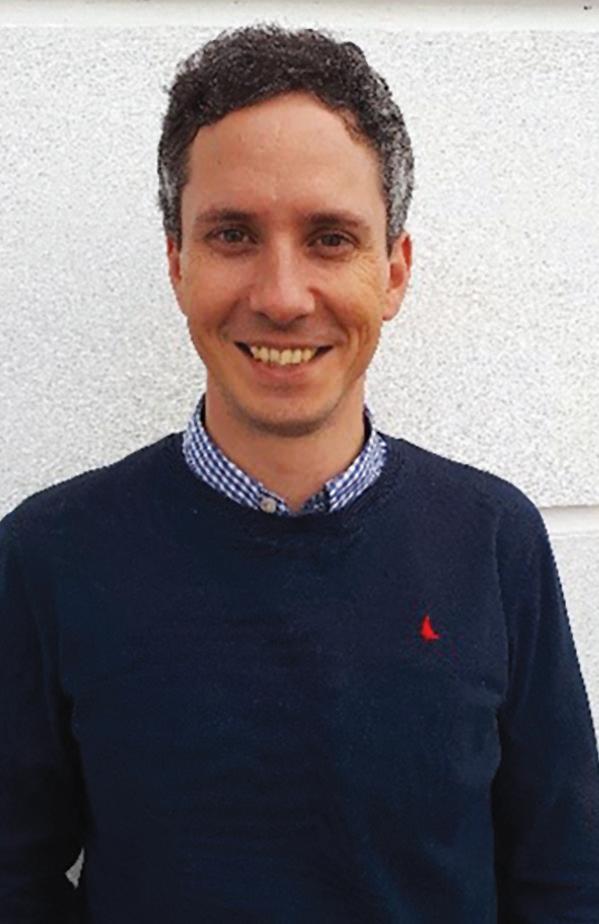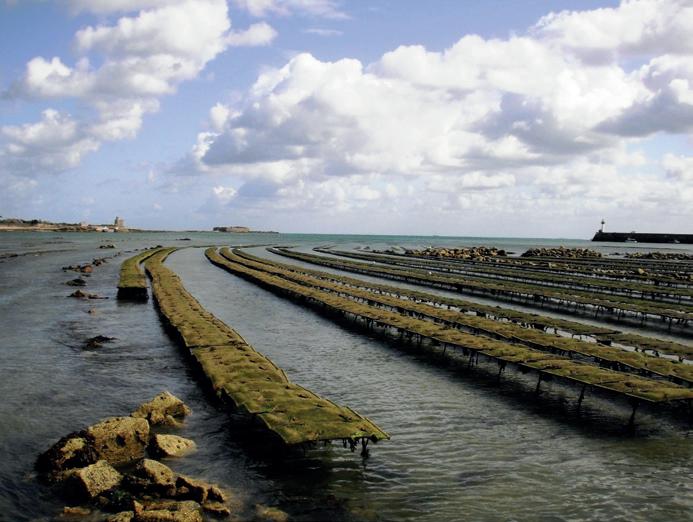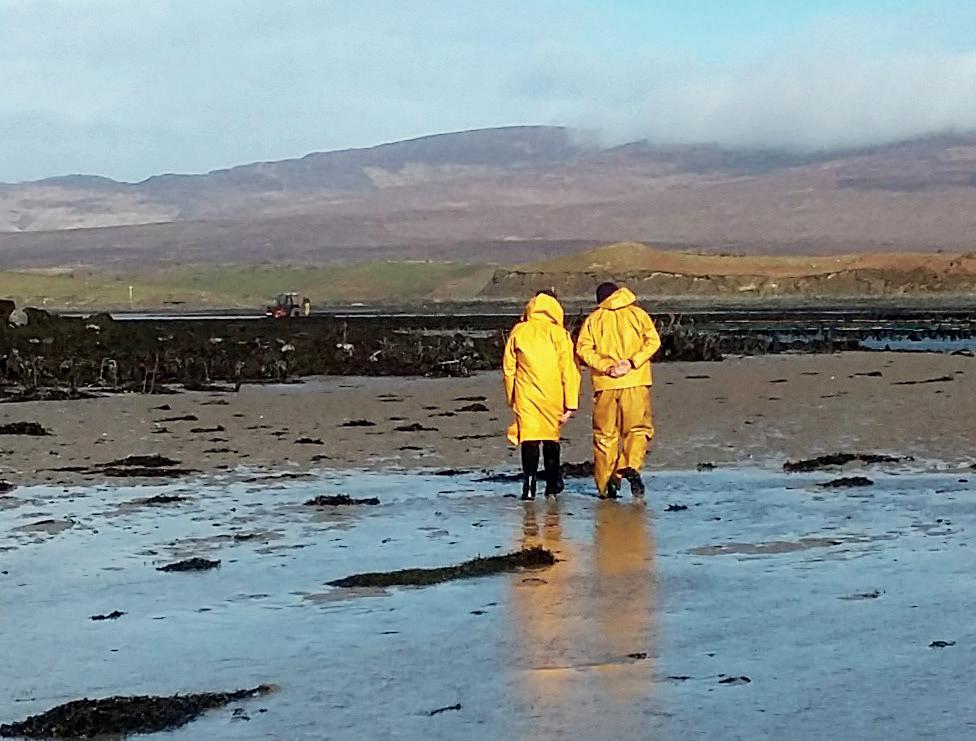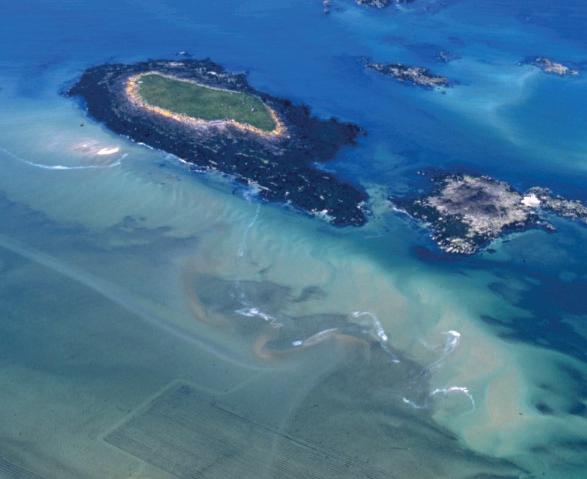
6 minute read
RORY CAMPBELL: Brexit and Covid - dual challenges for Irish aquaculture through 2020
Brexit and Covid - dual challenges for Irish aquaculture through 2020
Advertisement
Rory Campbell
2020 has been a remarkably eventful year as the industry faced the dual challenges of the COVID-19 pandemic and Brexit. 2020 was also the year I took on the role of Director of Seafood Technical Services at Bord Iascaigh Mhara (BIM), a position previously held by Donal Maguire before his retirement. As you may note from my surname, I am not native to Ireland; however, I am no stranger to the seafood industry. I have worked my entire career to date in the fisheries and aquaculture sectors in Scotland.
Joining BIM and moving to Ireland in the middle of a global pandemic has been challenging to say the least. However, my problems of travel restrictions, remote working and living in a virtual world of Zoom and Teams meetings are minor compared to the ongoing challenges the aquaculture industry in Ireland is facing as a result of the pandemic.
ShellfiSh exportS
That impact is particularly evident in oyster exports for the first half of 2020. On average, the volume of exports to France dropped by 62%, and exports to Asia were down almost 50%. In that same period, mussels experienced a decline of 15% when compared to 2019.
At first glance, this might appear to be less severe than expected considering the effects of Covid 19 on the European foodservice sector. However, many operators began to harvest early in the year before the full impact of the pandemic hit Europe. France is the key export destination for mussels, accounting for 43% of export value in 2019. The impact in this marketplace is more pronounced with a drop in export value of €2.7m, a decline of 21% on 2019 data.
The composition of the Irish aquaculture industry played a part in lessening the severity of the impact of the pandemic. The majority of shellfish businesses are classed as micro-enterprises – meaning they have fewer than ten full-time employees. Of the 201 production units in Ireland, 179 are microenterprises.
The advantage of these small businesses is their agility and ability to change business models to deal with changing marketplaces. However, it also means there is limited capital to weather the lack of sales in the short term. In addition to broader Government supports, BIM rolled out a Covid-19 Aquaculture Support Scheme in December 2020, supported by the European Maritime and Fisheries Fund. The Scheme aims to assist viable aquaculture businesses impacted by low sales due to ongoing restrictions and lockdowns. The uptake of the Scheme was strong, with 151 applications received and approved. BIM administered a total payment of €1,228,157 to assist businesses’ recovery and contribute to the sustainable growth of production, value, and employment in the aquaculture sector in the years ahead.
Brexit
From January 1st, we also had to contend with Brexit, which fundamentally altered

SPAT PREGROWN HALF-GROWN

Naturellement…




Environmental sustainable
Satmar is willing to preserve the essence of its products and to protect the biological balance of its production sites; therefore Satmar developed a production method without any antibiotics. This process is based on a sustainable production, less intensive than most hatcheries and on the geographic distribution of production sites. Satmar sites on Gatteville-Phare and Saint-Just-Luzac are certified AB - Biological Agriculture.
Safe
The choice to establish production sites of best quality waters, away from major production areas as well as the geographic distribution of its 9 sites between the Channel, the Atlantic Ocean, and the Mediterranean Sea, allows Satmar to modulate and secure its production. The complementarity of Gatteville and Leucate hatcheries, located at more than 1000 km from each other, guarantees the safety of the product in case of any incident.
Diverse
Satmar activity consists in the hatch and raise mainly of oysters, but also of clams. Satmar produces diploids and triploids oysters (GTS or by crossbreed), Japanese clams, in spats, pregrowing, and half-grown. The entreprise has 9 sites on the French coastline, selected for the quality of their waters: Gatteville-Phare, Lestre, Chausey on the Channel; Landéda, Ile-Tudy, Bouin, Saint-Philibert, Saint-Just-Luzac on the Atlantic Ocean; Leucate on the Mediterranean Sea.
our trading relationship with Great Britain and will continue to bring changes to the way product is brought to markets on the continent.
To help with these changes, BIM introduced a range of new services to support the Irish seafood industry prepare for Brexit and to help minimise disruption to trade as much as possible. For example, to provide accurate and up to date information on Brexit, BIM created a dedicated Brexit Hub on its website. This is proving to be a popular source of information for the seafood sector, with over 10,000 visits to the site in the run-up to January 1st.
The Brexit Hub provides a complete list of services offered by BIM. It also includes a recently added Brexit FAQ section, providing answers to key industry questions about Brexit. The solutions give a general overview of each topic and provide more detailed and valuable links for businesses requiring it.
BIM is also offering a Brexit Mentoring Programme, providing one-to-one support between seafood businesses and a specialist Brexit advisor. Brexit is a complex issue and an area of enormous concern for the industry. The team at BIM are working hard to keep the mentoring programme as easy and accessible as possible for the industry. I would strongly encourage any company that has not already availed of this support to do so by clicking on https://www. bim.ie/brexit-hub.
NatioNal Strategic plaN for aquaculture
Although Brexit and the Covid-19 pandemic have dominated headlines in the last twelve months, one of the highlights for the aquaculture industry in Ireland is the new National Strategic Plan for Aquaculture (NSPA).
The NSPA will inform investment priorities for aquaculture in Ireland’s operational programme under the European Maritime, Fisheries, and Aquaculture Fund, covering the period 2021 – 2030. The new plan differs from the one published in 2015. It aligns to four new horizontal objectives detailed in the new EU Strategic guidelines, published in April 2021.
The four objectives are:
l Building resilience and competitiveness
l Participating in the green transition l Ensuring social acceptance and consumer information
l Increasing knowledge and innovation
The plan recognises the resilience and important contribution aquaculture makes to the national and EU food system. Aquaculture functions in all circumstances and can ensure access to a sufficient supply of safe, nutritious and affordable food.
The new strategic plan will undergo a Strategic Environmental Assessment (SEA) for the plan’s potential environmental effects and alternatives. It will also consider and address the environmental issues raised by the sector, statutory consultees, and the public.
It is recognised that effective consultation is critical to ensuring the effectiveness of the process and the resulting plan. And accordingly, it is intended that the environmental report and the draft plan will be subject to full public consultation in late summer. This consultation will inform any required alterations to the plan and/ or environmental reports before its adoption in the Autumn.
I view this plan as being of critical importance to the aquaculture sector for the next decade. Therefore, I encourage everyone in the sector to engage with the consultation to ensure your views are accurately reflected.
I am very much looking forward to the time where Covid 19 is behind us and life returns to some semblance of normality. When this happens, I plan to spend a significant amount of time on the road travelling throughout Ireland, seeing and learning about the industry here firsthand, as well as meeting many of you in person.
Until then, please stay safe, and I wish you success during the year.






